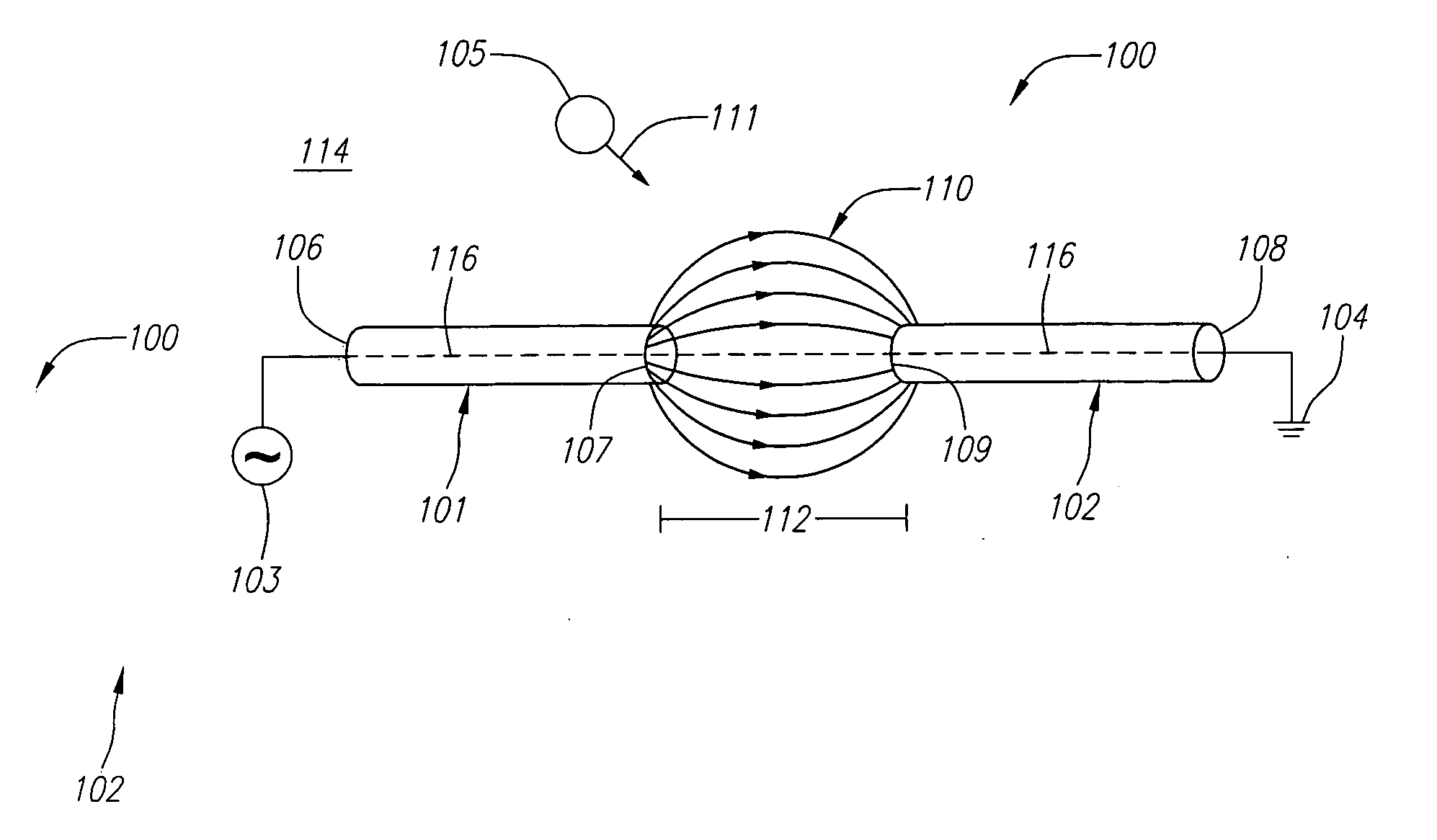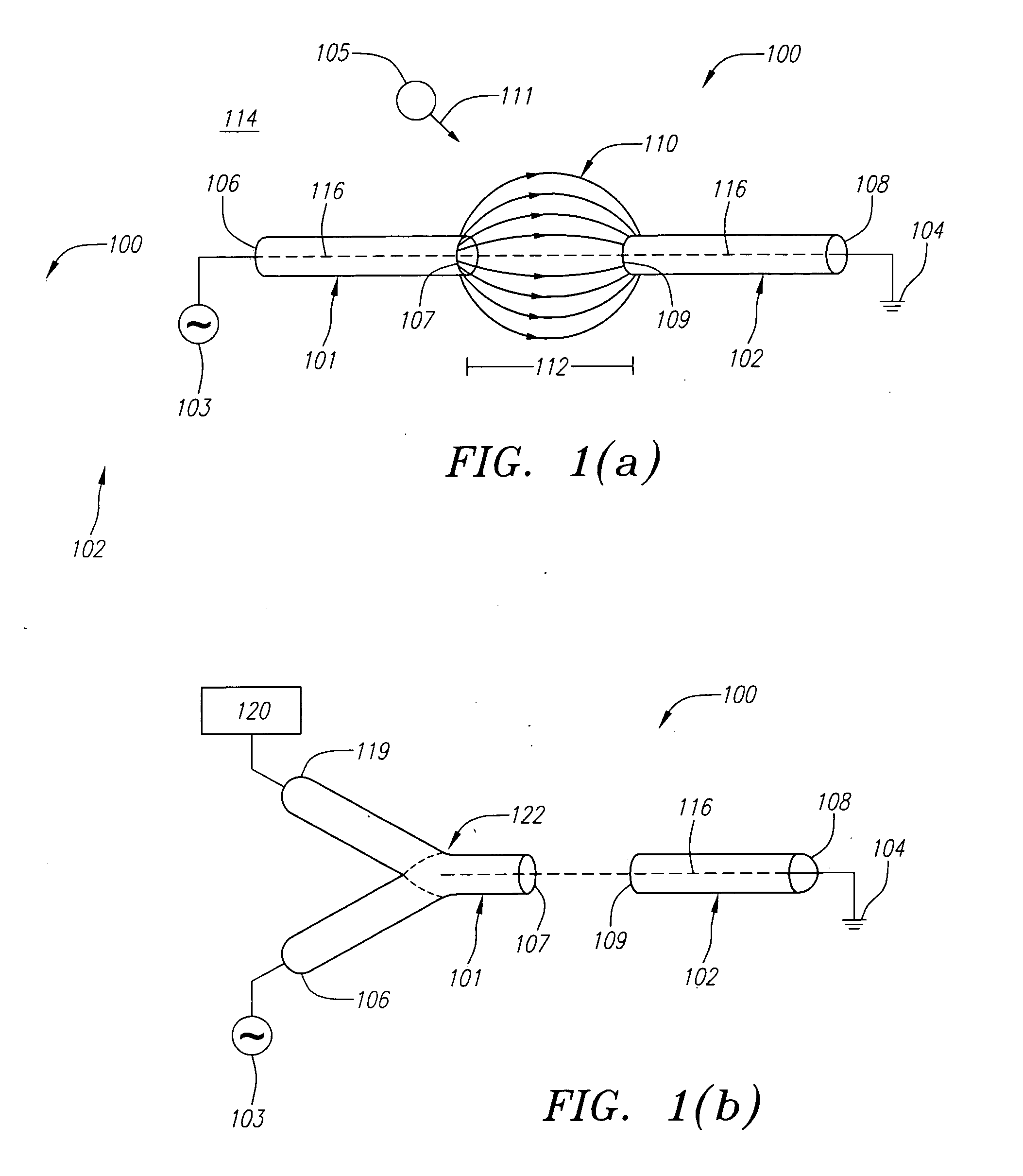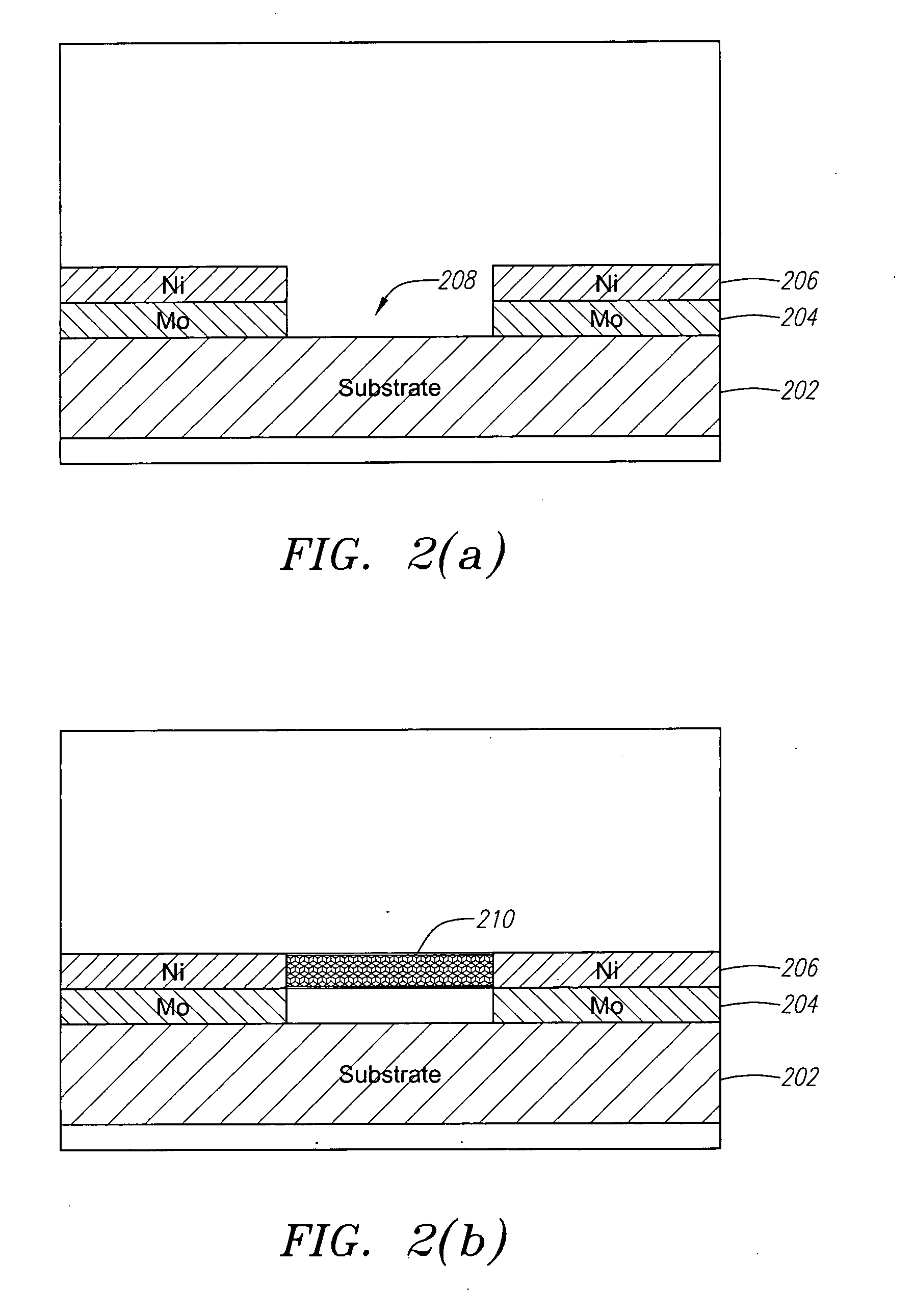Systems and methods for making and using nanoelectrodes
- Summary
- Abstract
- Description
- Claims
- Application Information
AI Technical Summary
Benefits of technology
Problems solved by technology
Method used
Image
Examples
Embodiment Construction
[0024] The present invention provides systems and methods for making and using nanoelectrodes for the dielectrophoretic manipulation of polarizable objects. FIG. 1(a) depicts a nanoelectrode dielectrophoretic system 100, which is a preferred embodiment of the systems and methods described herein. The system 100 includes first and second elongated nanoelectrodes 101 and 102, which are electrically coupled with a first time-varying voltage source 103 and a second voltage source 104, respectively.
[0025] During operation, the voltage sources 103 and 104 apply a time-varying electric potential to the nanotubes 101 and 102 to create a time-varying electric field 110 between the two nanotubes 101 and 102. This electric field 110 induces a dipole moment on a polarizable object 105, which then, in the presence of a field gradient, experiences a dielectrophoretic force 111 that is sufficient to overcome the thermal Brownian motion and cause the object 105 to move. Preferably, the object 105 ...
PUM
| Property | Measurement | Unit |
|---|---|---|
| Diameter | aaaaa | aaaaa |
| Nanoscale particle size | aaaaa | aaaaa |
| Electric potential / voltage | aaaaa | aaaaa |
Abstract
Description
Claims
Application Information
 Login to View More
Login to View More - R&D
- Intellectual Property
- Life Sciences
- Materials
- Tech Scout
- Unparalleled Data Quality
- Higher Quality Content
- 60% Fewer Hallucinations
Browse by: Latest US Patents, China's latest patents, Technical Efficacy Thesaurus, Application Domain, Technology Topic, Popular Technical Reports.
© 2025 PatSnap. All rights reserved.Legal|Privacy policy|Modern Slavery Act Transparency Statement|Sitemap|About US| Contact US: help@patsnap.com



